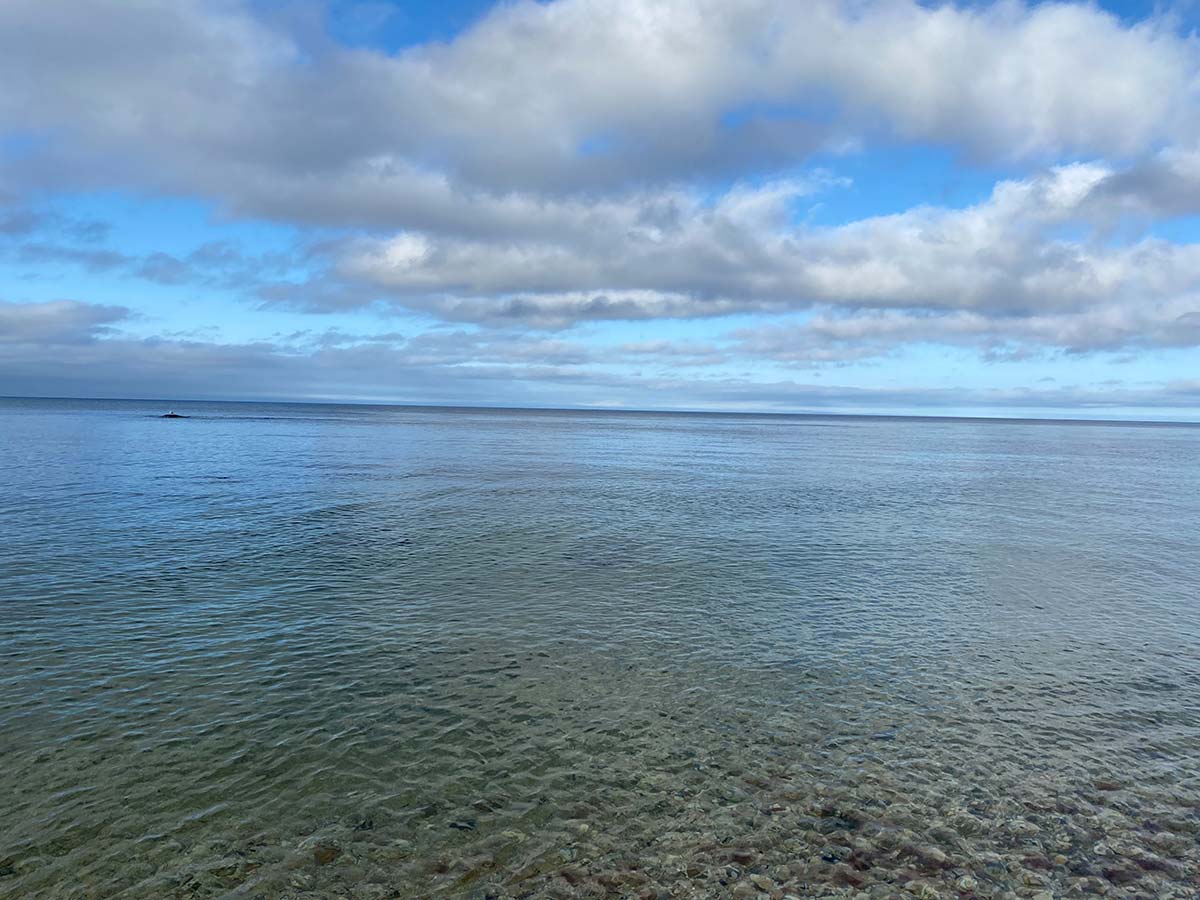
Profiles on fly tyers and anglers who helped mold the sport in the Long Island & Metro area
| All flies referenced in this article can be found in the book, Saltwater Flies of the Northeast by Angelo Peluso. That book and the author’s other fly-fishing books can be found at all major booksellers, online and directly from the author. |
The waters of Long Island have spawned and nurtured a number of remarkable fly tyers and fly anglers whose skills and accomplishments have received national and international acclaim. Their contributions to the sport have, in many ways, guided the evolution of contemporary fly fishing. From the time the New York Gazette reported on June 29, 1821 that, Mr. Samuel Carman, Jr. caught a ‘salmon-trout’ weighing 13 pounds, 8 ounces from the Carmans River, a spotlight has shined brightly on Long Island’s fly-fishing potential. That brook trout highlighted opportunities that have attracted fly anglers to Long Island from across the globe. Furthermore, as interest in saltwater fly fishing grew, many Long Islanders have had a significant impact on that growth throughout northeast and mid-Atlantic regions of the East Coast. The following profiles highlight some of the more prominent such individuals who have helped shape modern fly fishing and the art of fly tying.
Captain Joe Blados
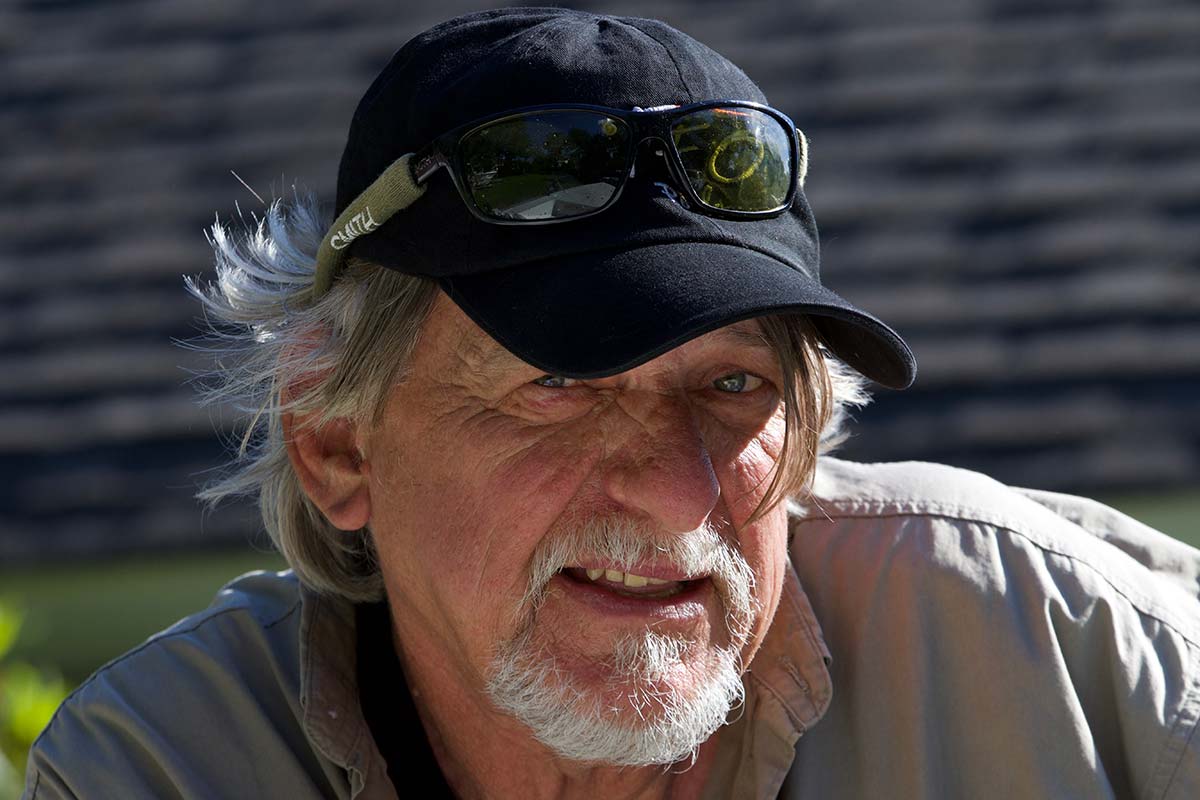
As a native Long Islander, Joe Blados has had a life-long love affair with saltwater fly fishing as a captain and well-known saltwater fishing guide on the east end of the North Fork. Joe is also an accomplished fly tyer whose style, technique and creativity are exemplified in the design of his world-renowned Crease Fly, one of the most original flies ever created in the modern era. While all tyers strive to produce flies that are new and different, in reality, most typically craft designs that represent modifications or variations of existing and proven patterns. With the exception of the discovery and utilization of new materials and alternative tying techniques, most new flies introduced into the contemporary market are functional variations of already successful patterns. That approach is the very foundation upon which the tying art is built. But every once in a long while we witness true innovation in the art of fly tying: a fly design or technique that is so unique it changes the way we fish and changes the sport. One such design and technique was the inspiration of Captain Blados and lead to the creation of the Crease Fly, a pattern intended to mimic the profile of menhaden. While originally conceived for the inshore fishery of the North Fork of Long Island, this fly has an established track record and loyal devotees wherever it has been fished. It has become a staple in the fly box of anglers pursuing striped bass, bluefish, false albacore and bonito, and is in demand worldwide for many other species of fish. The Crease Fly’s effectiveness has been proven on all the world’s continents. It is a truly a remarkably designed fly, with a touch of an artist’s creativity. And that is not just a mere coincidence, for there is another side of Joe Blados that is equally as remarkable as the fly he created. Joe is also an accomplished artist, whose style and technique is as unique as the design of the Crease Fly. Given his background and vocations, it will not come as any surprise that Joe’s favorite subjects are fish, painted through the use of pen and digital air brush. I have viewed Joe’s work and can say without reservation that is it is nothing short of phenomenal. His images evoke a sense of underwater impressionism. They are vivid, vibrant and convey to the observer an image of aquatic motion with fish and flies central to his themes. His style is refreshing and unique.
Captain John Haag
| SAVE THE DATE |
| If what you read here interests you and you want to learn more about fly fishing, we recommend you check out the annual Long Island Fly Fishing expo on March 25 at the Radisson Hotel at 110 Vanderbilt Parkway in Happague, NY. The event will feature an outdoor casting area, 80-seat presentation theater, additional demos & workshops along with saltwater & freshwater equipment and seminars. |
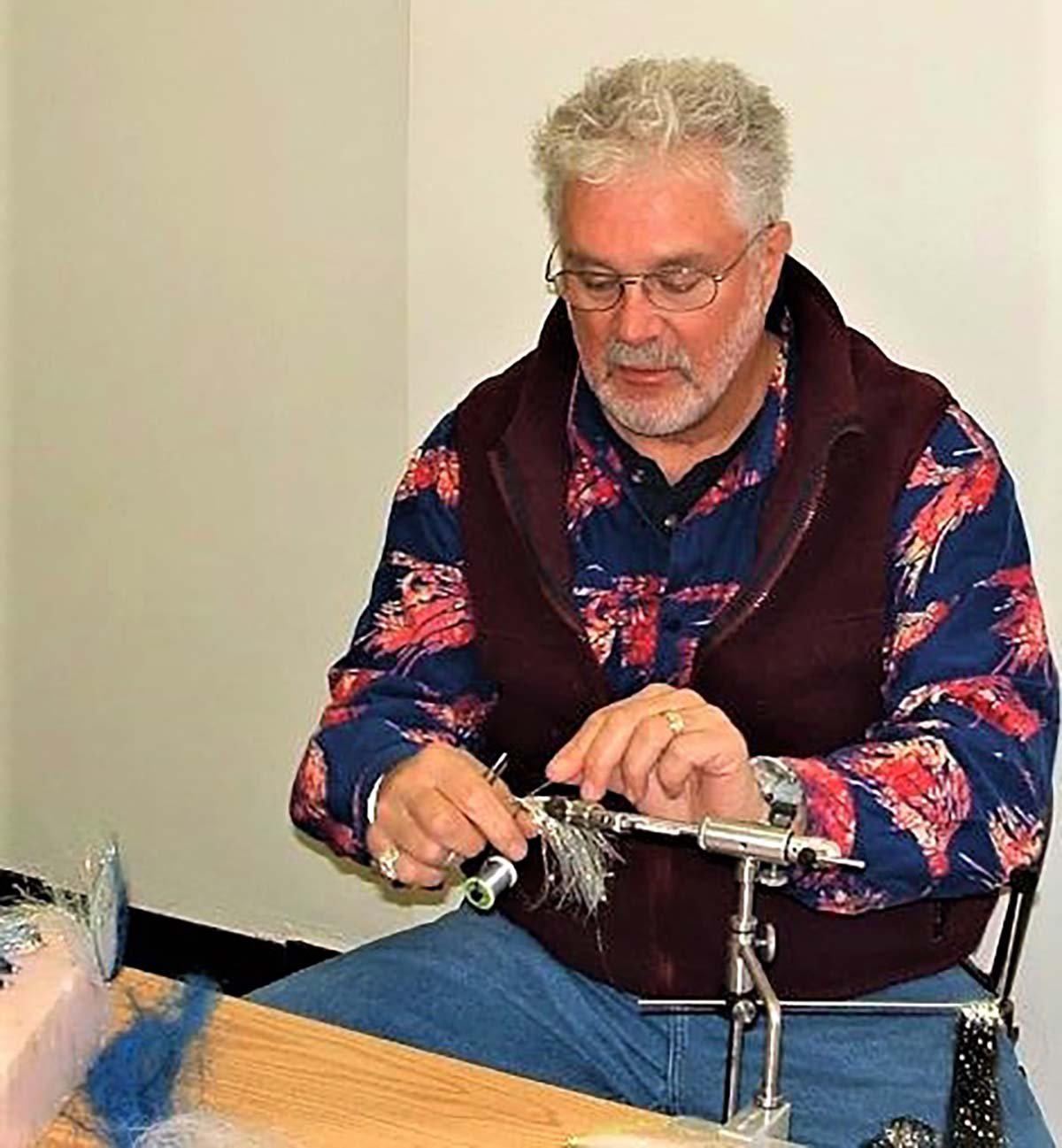 With the passing of John Haag, the world of fly fishing lost a remarkable fly tyer, angler and human being. But Captain Haag has indeed left an indelible mark on the sport of fly fishing and the art of fly tying, and he greatly influenced the Long Island fly fishing scene. Captain Haag was well known and well respected throughout the entire fly-fishing community. While working on my book, Saltwater Flies of the Northeast, I had occasion to talk with some of the most prominent anglers and tyers up and down the length of the northeast coast. To a person, each of those folks either knew John personally or knew of his fly-tying expertise. Equally as impressive were the positive comments that all made regarding John’s contributions to the sport. His legacy is that of a man who willingly shared all that he knew about fishing and fly tying to anyone who was interested. He was, and still is viewed as the consummate student of fly tying. John studied the work of classic tyers and embraced the innovations of his contemporaries. As accomplished as John was, he was always willing to learn from anyone who crossed his path, regardless of their level of skill. Captain Haag’s own tying style was quite visionary, and his use of modern materials resulted in very unique and effective patterns for both freshwater and saltwater species. His discovery of a product that he called Haag Hair facilitated the creation of larger flies with minimal bulk. The use of this material coupled with own style of tying inspired his creation of an entire series of Haig Hair Glimmer Fish, that replicated just about every significant baitfish that swims in the waters of Long Island, including bunker, mullet, spearing, anchovy, pinfish, mummichogs and sand eels. John’s patterns are versatile and easily adapted to most fly-fishing situations. Haag also developed an adhesive setting material called Devil Sauce that is used to give his flies body and form. This substance was typically applied to the layers of materials to add structure and durability to the fly. Devil Sauce was in many ways a predecessor of many similar compounds and substances to follow. Above all else, John will be remembered most for his endless enthusiasm. Captain Haag’s most prominent patterns include: the All American Eel; Big Bellied Bait; Bunny Wiggler; Crease Flounder; Glimmer Herring; Glimmer Squid; No Bay-Vy; Rainfish; Wooly Mummichog; and the Wooly Mullet.
With the passing of John Haag, the world of fly fishing lost a remarkable fly tyer, angler and human being. But Captain Haag has indeed left an indelible mark on the sport of fly fishing and the art of fly tying, and he greatly influenced the Long Island fly fishing scene. Captain Haag was well known and well respected throughout the entire fly-fishing community. While working on my book, Saltwater Flies of the Northeast, I had occasion to talk with some of the most prominent anglers and tyers up and down the length of the northeast coast. To a person, each of those folks either knew John personally or knew of his fly-tying expertise. Equally as impressive were the positive comments that all made regarding John’s contributions to the sport. His legacy is that of a man who willingly shared all that he knew about fishing and fly tying to anyone who was interested. He was, and still is viewed as the consummate student of fly tying. John studied the work of classic tyers and embraced the innovations of his contemporaries. As accomplished as John was, he was always willing to learn from anyone who crossed his path, regardless of their level of skill. Captain Haag’s own tying style was quite visionary, and his use of modern materials resulted in very unique and effective patterns for both freshwater and saltwater species. His discovery of a product that he called Haag Hair facilitated the creation of larger flies with minimal bulk. The use of this material coupled with own style of tying inspired his creation of an entire series of Haig Hair Glimmer Fish, that replicated just about every significant baitfish that swims in the waters of Long Island, including bunker, mullet, spearing, anchovy, pinfish, mummichogs and sand eels. John’s patterns are versatile and easily adapted to most fly-fishing situations. Haag also developed an adhesive setting material called Devil Sauce that is used to give his flies body and form. This substance was typically applied to the layers of materials to add structure and durability to the fly. Devil Sauce was in many ways a predecessor of many similar compounds and substances to follow. Above all else, John will be remembered most for his endless enthusiasm. Captain Haag’s most prominent patterns include: the All American Eel; Big Bellied Bait; Bunny Wiggler; Crease Flounder; Glimmer Herring; Glimmer Squid; No Bay-Vy; Rainfish; Wooly Mummichog; and the Wooly Mullet.
Lee Weil
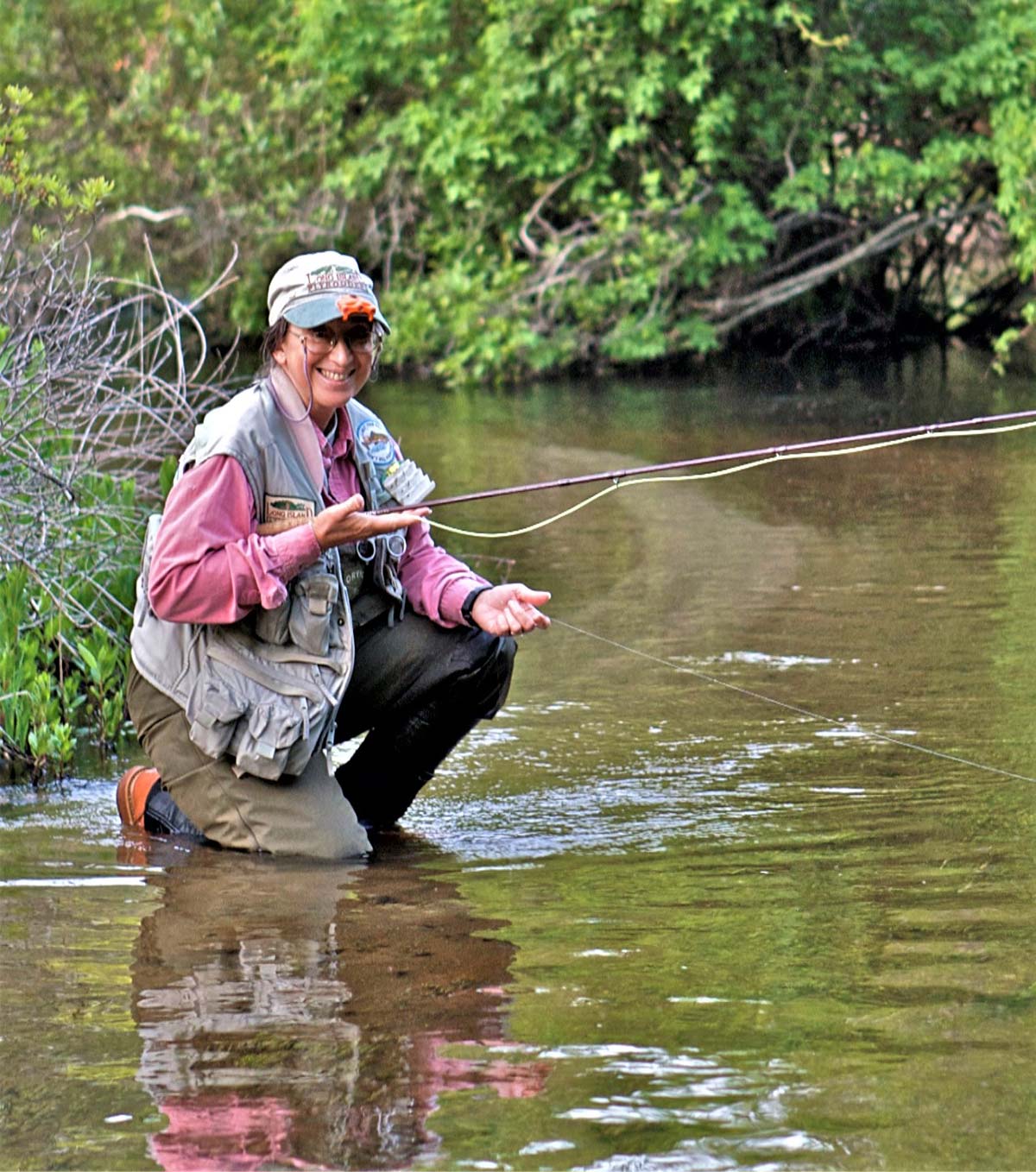 Lee Weil is a native New Yorker, and her fishing roots extend back to Baldwin, Long Island where she learned to fish under the tutelage of her grandfather. As her love of fishing grew, she expanded her interests, and in 1981 embraced the sport of fly fishing. It didn’t take her long to become one of the most accomplished fly anglers and fly tyers on Long Island. Lee made her livelihood working with and training thoroughbred horses, and as an outrider at major New York racetracks. She also worked for the Jockey Club. Yet, she rapidly rose through the ranks of Long Island’s top-tier fly anglers to become President of the Long Island Fly Rodders. She has also devoted herself to the sport as a Retreat Leader for Casting for Recovery on Long Island. Lee’s fly-tying work has been featured in Fly Tyer Magazine and the American Angler Magazine, and she has also been a celebrity fly tyer at the International Fly Tying Symposium. She continues to deliver classes and presentations at various clubs and fishing organizations. Lee’s tying style is quite innovative and she enjoys using different materials to create hybrid flies that blend the best attributes of freshwater and saltwater patterns. Her favorite flies to tie are freshwater bass patterns, and her trademark deer hair mouse is well-known. That pattern design was recognized as a winning fly in a local Orvis tying contest. Other of her well-known flies include the Sparkle Shrimp, Foxy Gotcha and the Wedgie. She has also designed and tied many other patterns. While Lee enjoys fly fishing for all species of fish, she will admit to being especially partial to smallmouth bass.
Lee Weil is a native New Yorker, and her fishing roots extend back to Baldwin, Long Island where she learned to fish under the tutelage of her grandfather. As her love of fishing grew, she expanded her interests, and in 1981 embraced the sport of fly fishing. It didn’t take her long to become one of the most accomplished fly anglers and fly tyers on Long Island. Lee made her livelihood working with and training thoroughbred horses, and as an outrider at major New York racetracks. She also worked for the Jockey Club. Yet, she rapidly rose through the ranks of Long Island’s top-tier fly anglers to become President of the Long Island Fly Rodders. She has also devoted herself to the sport as a Retreat Leader for Casting for Recovery on Long Island. Lee’s fly-tying work has been featured in Fly Tyer Magazine and the American Angler Magazine, and she has also been a celebrity fly tyer at the International Fly Tying Symposium. She continues to deliver classes and presentations at various clubs and fishing organizations. Lee’s tying style is quite innovative and she enjoys using different materials to create hybrid flies that blend the best attributes of freshwater and saltwater patterns. Her favorite flies to tie are freshwater bass patterns, and her trademark deer hair mouse is well-known. That pattern design was recognized as a winning fly in a local Orvis tying contest. Other of her well-known flies include the Sparkle Shrimp, Foxy Gotcha and the Wedgie. She has also designed and tied many other patterns. While Lee enjoys fly fishing for all species of fish, she will admit to being especially partial to smallmouth bass.
Bob Lindquist
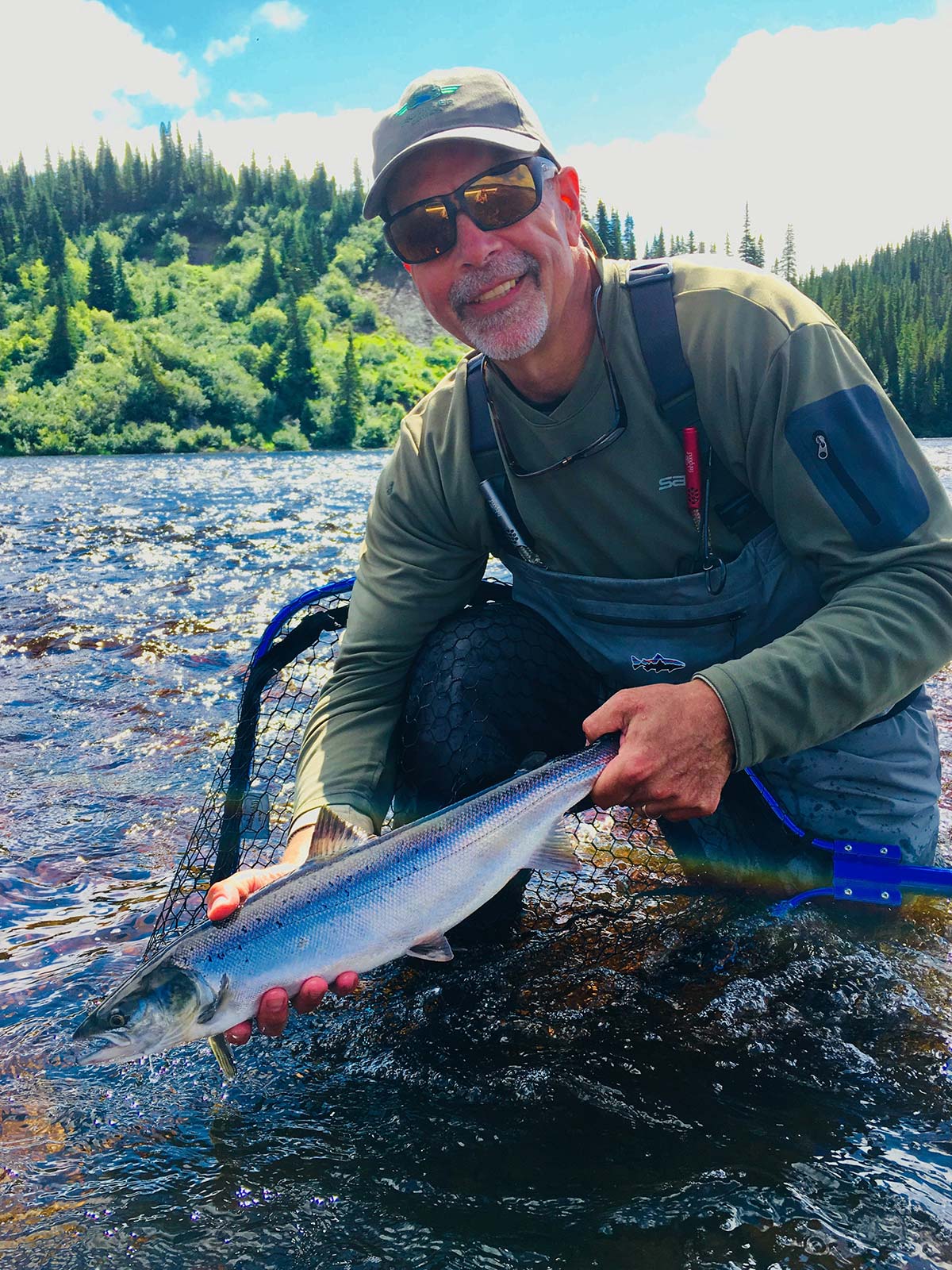 As a master fly angler and fly tyer, Bob Lindquist has, in many ways, helped shape not only the face of Long Island fly fishing, but also regional and national fly tying. Thusly, Bob is in high demand as a speaker and presenter at many industry shows and fly-fishing club events. This renowned Long Islander consistently delivers some of the most original, informative and entertaining presentations. Pick up any of the national fly fishing or fly-tying publications and there is a good chance that you will see either Bob’s direct work or the influences of his contributions to the sport in the work of others. And if you attend any of the major Northeast fly fishing shows you will also see Lindquist sharing his knowledge and tying his creations in front of captivated audiences. He has been a popular celebrity fly tyer at all the regional fly fishing shows events. Why is his work so popular? For one reason, Lindquist has taken his mathematician’s curiosity and discipline and applied those attributes to both his fly fishing and fly tying. Attention to detail is a hallmark of his work. Bob is also a foremost student of baitfish and bugs. His love of both saltwater and freshwater fly fishing has motivated him to thoroughly study and understand the life cycles and behaviors of the aquatic insects and baitfish that his flies replicate. As a result, all of his fly designs capitalize on the critical characteristics that stimulate predatory fish to strike. Bob has taken his fascination for this so far as to testing and photographing his flies underwater to compare them to the movements and distinctiveness of the food sources they are intended to represent.
As a master fly angler and fly tyer, Bob Lindquist has, in many ways, helped shape not only the face of Long Island fly fishing, but also regional and national fly tying. Thusly, Bob is in high demand as a speaker and presenter at many industry shows and fly-fishing club events. This renowned Long Islander consistently delivers some of the most original, informative and entertaining presentations. Pick up any of the national fly fishing or fly-tying publications and there is a good chance that you will see either Bob’s direct work or the influences of his contributions to the sport in the work of others. And if you attend any of the major Northeast fly fishing shows you will also see Lindquist sharing his knowledge and tying his creations in front of captivated audiences. He has been a popular celebrity fly tyer at all the regional fly fishing shows events. Why is his work so popular? For one reason, Lindquist has taken his mathematician’s curiosity and discipline and applied those attributes to both his fly fishing and fly tying. Attention to detail is a hallmark of his work. Bob is also a foremost student of baitfish and bugs. His love of both saltwater and freshwater fly fishing has motivated him to thoroughly study and understand the life cycles and behaviors of the aquatic insects and baitfish that his flies replicate. As a result, all of his fly designs capitalize on the critical characteristics that stimulate predatory fish to strike. Bob has taken his fascination for this so far as to testing and photographing his flies underwater to compare them to the movements and distinctiveness of the food sources they are intended to represent.
Glenn Mikkleson
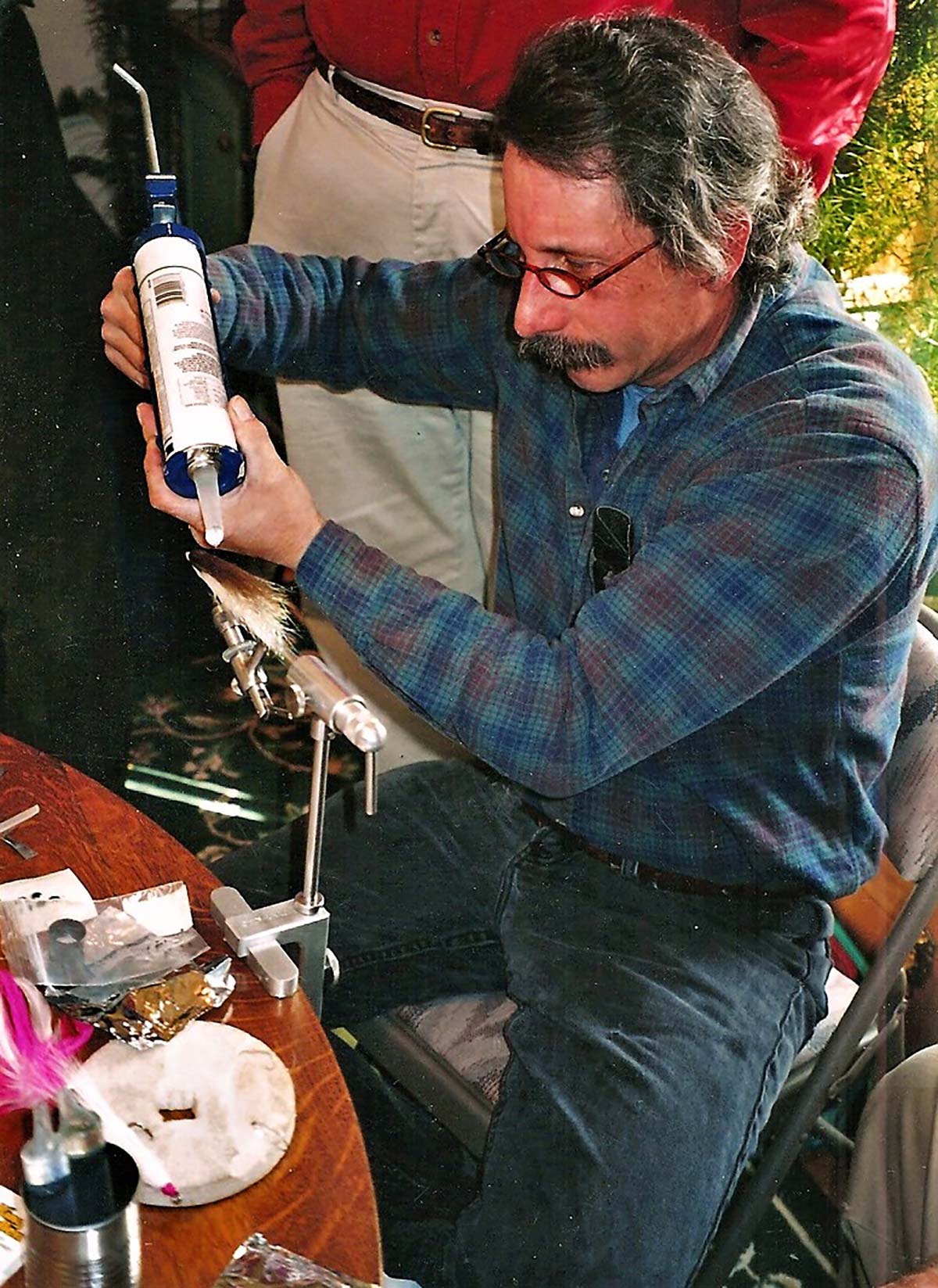 Mention epoxy-style baitfish patterns to any knowledgeable fly angler and one of the first fly tyers that comes to mind is Long Island’s Glen Mikkleson. Glen is one of the foremost innovators in the use of epoxies and acrylics and super glues as mediums for tying saltwater flies. Starting out as a tyer of classic freshwater trout and bass patterns, Mikkleson transitioned to saltwater long before interest peaked in the Northeast. He was one of the first to break out from the mold of traditional tying methods and materials and embrace the use of innovative materials to craft novel and original fly patterns. Mikkleson’s use of epoxies and acrylics was nothing short of ground-breaking, and inventive to the point of being an art form. Watching him give a demonstration of his tying methods and techniques is mesmerizing as he mixes, applies, molds and shapes literal globs of epoxy and acrylic into magnificent replicas of squid, crab, shrimp and assorted baitfish. Crafting flies in this manner and with these materials is no easy task if perfection is your goal. It is an acquired artisan’s skill that Mikkleson has mastered and has passed on to many other aspiring tyers. Paraphrasing one of his beliefs, Glen is fond of saying that a fly which falls apart after a few fish is poorly designed and poorly tied. He would add that while this may seem obvious, low quality flies can easily begin to malfunction in unsuspecting ways that make them ineffective. Fouling is another issue that Glen works hard at to prevent with his patterns. His epoxy baitfish designs are some of the most foul-resistant flies in use today. What one finds with a Mikkleson fly is an extraordinary attention to quality. His flies are perfectly balanced, foul resistant and extremely durable. As a commercial fly tyer, Glenn believes strongly in giving his clients a product that will stand the test of time and the jaws of many fish. Another critical tying principle that Mikkleson professes is that of balance and symmetry. He advocates that a fly has to swim correctly if the angler expects it to be eaten. With all of his flies, Glen advises to place the bulk of more buoyant materials above the ballast line of the hook bend to ensure the fly will ride upright.
Mention epoxy-style baitfish patterns to any knowledgeable fly angler and one of the first fly tyers that comes to mind is Long Island’s Glen Mikkleson. Glen is one of the foremost innovators in the use of epoxies and acrylics and super glues as mediums for tying saltwater flies. Starting out as a tyer of classic freshwater trout and bass patterns, Mikkleson transitioned to saltwater long before interest peaked in the Northeast. He was one of the first to break out from the mold of traditional tying methods and materials and embrace the use of innovative materials to craft novel and original fly patterns. Mikkleson’s use of epoxies and acrylics was nothing short of ground-breaking, and inventive to the point of being an art form. Watching him give a demonstration of his tying methods and techniques is mesmerizing as he mixes, applies, molds and shapes literal globs of epoxy and acrylic into magnificent replicas of squid, crab, shrimp and assorted baitfish. Crafting flies in this manner and with these materials is no easy task if perfection is your goal. It is an acquired artisan’s skill that Mikkleson has mastered and has passed on to many other aspiring tyers. Paraphrasing one of his beliefs, Glen is fond of saying that a fly which falls apart after a few fish is poorly designed and poorly tied. He would add that while this may seem obvious, low quality flies can easily begin to malfunction in unsuspecting ways that make them ineffective. Fouling is another issue that Glen works hard at to prevent with his patterns. His epoxy baitfish designs are some of the most foul-resistant flies in use today. What one finds with a Mikkleson fly is an extraordinary attention to quality. His flies are perfectly balanced, foul resistant and extremely durable. As a commercial fly tyer, Glenn believes strongly in giving his clients a product that will stand the test of time and the jaws of many fish. Another critical tying principle that Mikkleson professes is that of balance and symmetry. He advocates that a fly has to swim correctly if the angler expects it to be eaten. With all of his flies, Glen advises to place the bulk of more buoyant materials above the ballast line of the hook bend to ensure the fly will ride upright.
Enrico Puglisi
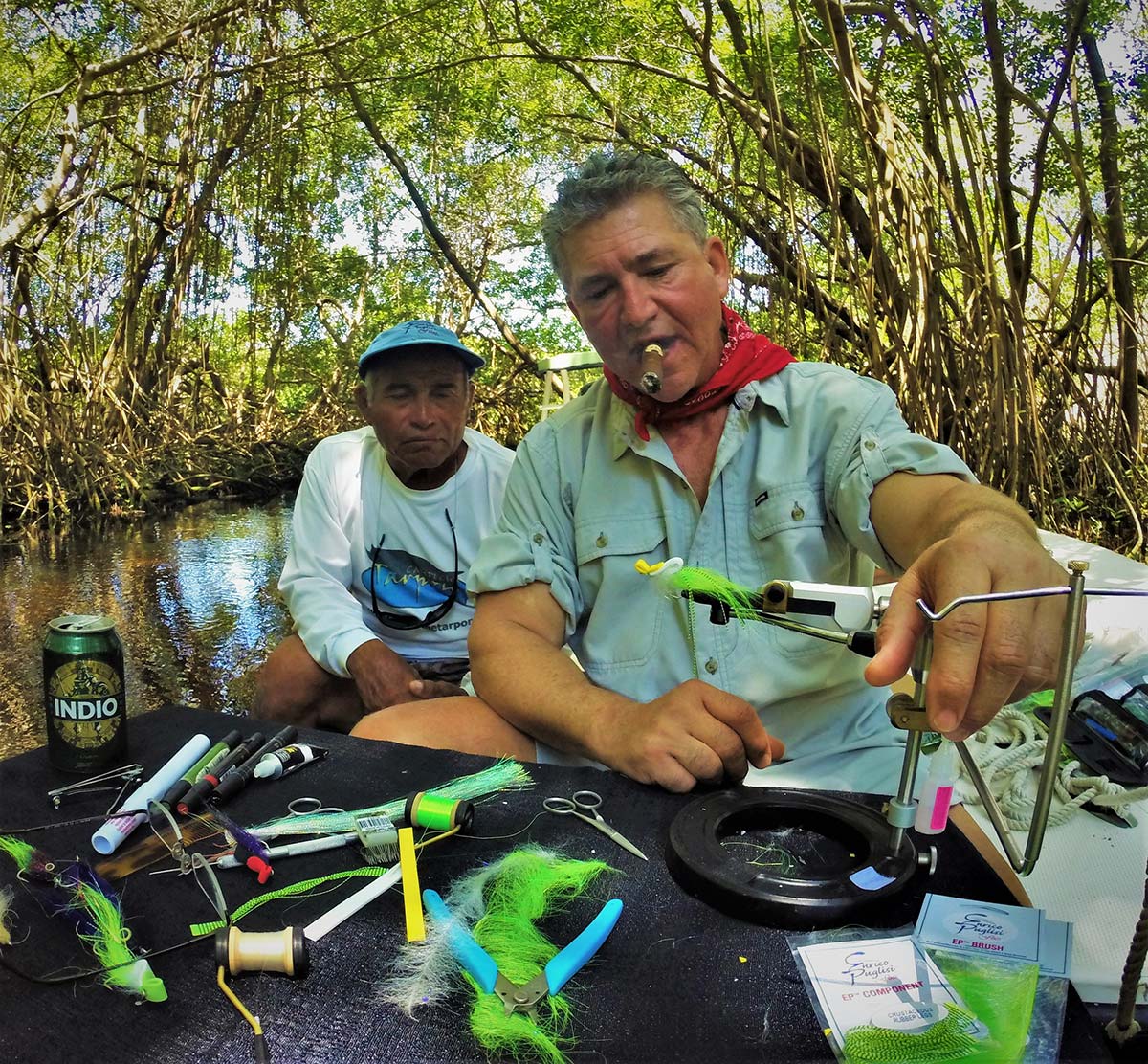 If you’ve spent any time around fly fishing and fly tying, the name Enrico Puglisi would be a familiar one. As a young boy growing up in Sicily, Enrico was captivated by the way his father and uncles caught fish by using chicken feathers. That fascination with feathers and fish followed Enrico throughout his life, both in Italy and in the United States. Enrico settled on Long Island in 1980 where he worked as a chef, and in his spare time, explored the region’s fishing opportunities. Eventually, Enrico experienced fly fishing for trout on Long Island and on other streams throughout New York State. That exposure lead Enrico on a pursuit to understand why fish eat artificial flies. Fly fishing and fly tying soon became such a force in Enrico’s life that he followed this path as a career. He opened The Practical Fly Shop on Long Island in 1992, beginning what would eventually become global exposure for Enrico’s innovative flies and fly-tying materials. Enrico also expanded his interests to include fly fishing for saltwater species of fish, and roamed several Long Island beaches to test his fly patterns and techniques. Enrico would continue to experiment with more durable synthetic and natural materials, and that lead to the creation of his world-renowned and trademarked “EP Flies” and “EP Fibers”. These innovative products have made and continue to make significant impacts on the direction of saltwater fly fishing. Enrico’s hand-tied flies are now recognized around the world, and his meticulous tying techniques are demonstrated at major fly fishing shows both in the United States and Europe. Ever-willing to teach his art and craft, Enrico has inspired a multitude of anglers that span all generations.
If you’ve spent any time around fly fishing and fly tying, the name Enrico Puglisi would be a familiar one. As a young boy growing up in Sicily, Enrico was captivated by the way his father and uncles caught fish by using chicken feathers. That fascination with feathers and fish followed Enrico throughout his life, both in Italy and in the United States. Enrico settled on Long Island in 1980 where he worked as a chef, and in his spare time, explored the region’s fishing opportunities. Eventually, Enrico experienced fly fishing for trout on Long Island and on other streams throughout New York State. That exposure lead Enrico on a pursuit to understand why fish eat artificial flies. Fly fishing and fly tying soon became such a force in Enrico’s life that he followed this path as a career. He opened The Practical Fly Shop on Long Island in 1992, beginning what would eventually become global exposure for Enrico’s innovative flies and fly-tying materials. Enrico also expanded his interests to include fly fishing for saltwater species of fish, and roamed several Long Island beaches to test his fly patterns and techniques. Enrico would continue to experiment with more durable synthetic and natural materials, and that lead to the creation of his world-renowned and trademarked “EP Flies” and “EP Fibers”. These innovative products have made and continue to make significant impacts on the direction of saltwater fly fishing. Enrico’s hand-tied flies are now recognized around the world, and his meticulous tying techniques are demonstrated at major fly fishing shows both in the United States and Europe. Ever-willing to teach his art and craft, Enrico has inspired a multitude of anglers that span all generations.
Captain Paul Dixon
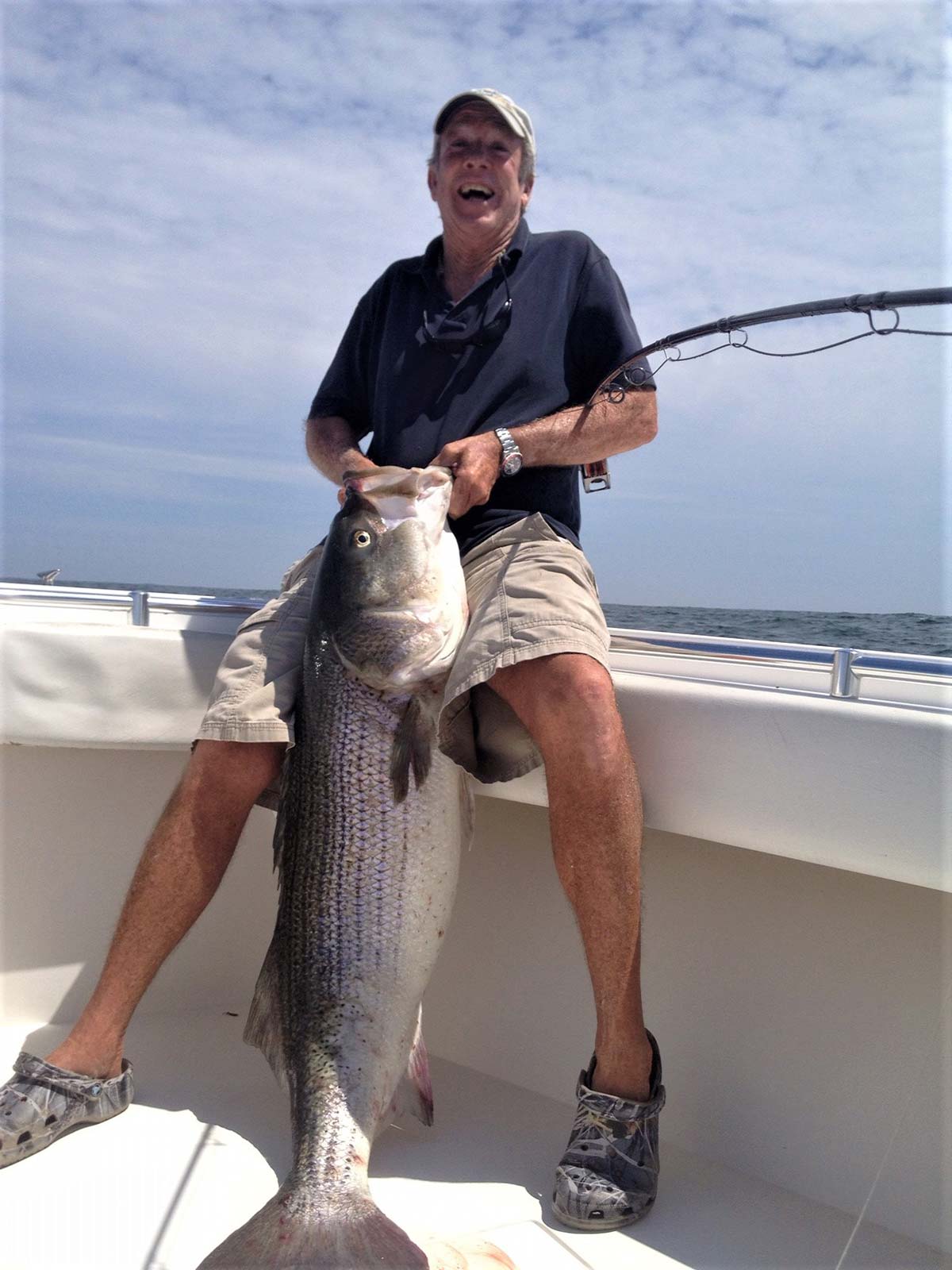 One of the most innovative aspects of saltwater fishing on Long Island has been the application, of southern U.S and tropical flats fishing techniques to skinny water fishing in the Northeast, especially when sight-casting to striped bass. Captain Paul Dixon has been a pioneer in bringing those skills, methods and tactics to the forefront of Northeast fly fishing. Standing atop the poling platform of his flats skiff, Captain Dixon has been a prominent fixture on the waters of East Hampton and around Gardiners Islands. Paul’s many years of exploring those areas and perfecting localized techniques have, in many respects, put Long Island flats fishing on the map, and have motivated many others to follow in his path. Although a native of Newport Beach, California, Captain Dixon moved to Long Island in the mid-1980s and quickly became one of the most respected and skilled fly fishing and light tackle guides along the entire East Coast. As part of Dixon’s To the Point Charters, Captain Paul also sets up shop along the waters of legendary Montauk Point, where he has been highly sought-after guide for anglers wanting to fish the famed Montauk fall run of striped bass, bluefish and false albacore.
One of the most innovative aspects of saltwater fishing on Long Island has been the application, of southern U.S and tropical flats fishing techniques to skinny water fishing in the Northeast, especially when sight-casting to striped bass. Captain Paul Dixon has been a pioneer in bringing those skills, methods and tactics to the forefront of Northeast fly fishing. Standing atop the poling platform of his flats skiff, Captain Dixon has been a prominent fixture on the waters of East Hampton and around Gardiners Islands. Paul’s many years of exploring those areas and perfecting localized techniques have, in many respects, put Long Island flats fishing on the map, and have motivated many others to follow in his path. Although a native of Newport Beach, California, Captain Dixon moved to Long Island in the mid-1980s and quickly became one of the most respected and skilled fly fishing and light tackle guides along the entire East Coast. As part of Dixon’s To the Point Charters, Captain Paul also sets up shop along the waters of legendary Montauk Point, where he has been highly sought-after guide for anglers wanting to fish the famed Montauk fall run of striped bass, bluefish and false albacore.




